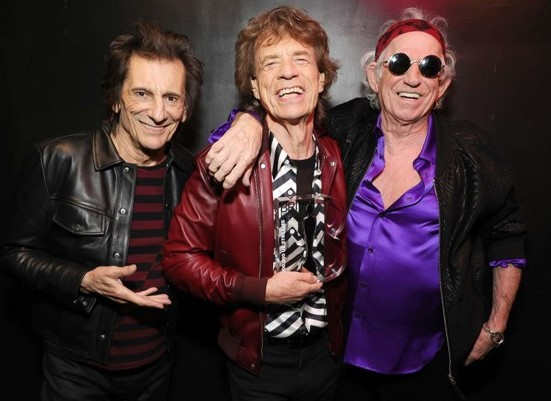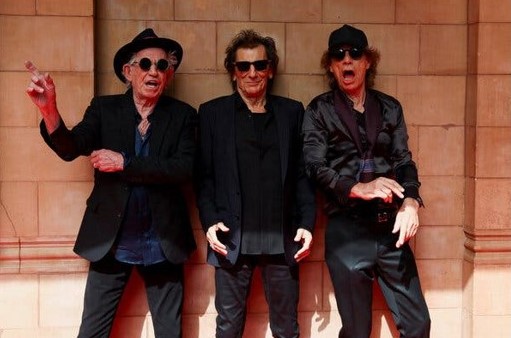Welcome to the second installment of my new recurring feature on prominent music producers and sound engineers. The inaugural post about George Martin is here. Of course, I had to kick off the series in early January with a personality closely associated with The Beatles. A second close to my favorite band of all time are The Rolling Stones, which brings me to my pick for this post: Jimmy Miller.
I suspect this “everyday man-sounding” name may be less familiar than George Martin. But it’s also safe to assume that most folks have heard of Stones gems like Beggars Banquet, Sticky Fingers and Exile On Main St. Or how about The Second Album (The Spencer Davis Group), Mr. Fantasy (Traffic) and Overkill (Motörhead) to name a few other albums that were produced or co-produced by Miller?

The American record producer and musician, who was born James Miller on March 23, 1942, started getting into music as an 8-year-old, picking up the drums and beginning to write music. I suspect his surroundings played a role. His dad Bill Miller served as entertainment director for several large Las Vegas casinos from the ’50s to the ’70s, booking top acts like Frank Sinatra, Dean Martin and, yes, Elvis Presley.
Miller’s intro to the music business happened under record executive Stanley Borden who introduced him to Jamaican-British record producer and Island Records founder Chris Blackwell. Blackwell brought Miller to the UK where his first job was to remix Gimme Some Lovin’, a single by The Spencer Davis Group, who Blackwell had signed to Island in 1964. Miller’s remix not only broke the band in the U.S. with their first top 10 hit but also started his relationship with Steve Winwood.

Miller’s production of albums by Traffic and Blind Faith was followed by the first two Spooky Tooth records, as well as the March 1970 Delaney & Bonnie live album On Tour with Eric Clapton, which he co-produced with Delaney Bramlett. And let’s not forget the Stones who first came into the picture in the spring of 1968 with the aforementioned Beggars Banquet, the first of five Stones albums Miller produced in a row.
In the late 70s, Miller collaborated with Motörhead and produced their albums Overkill (March 1979) and Bomber (October 1979). He continued to work as a producer in the ’80s and early ’90s until his untimely death from liver failure in October 1994 at age 52. Let’s take a closer look at some of Miller’s work.
The Spencer Davis Group/Gimme Some Lovin’ (1966)
Gimme Some Lovin’, written by Winwood and released in October 1966, became the U.S. breakthrough single for The Spencer Davis Group, climbing to no. 7 on the Billboard Hot 100. Songfacts notes Gimme Some Lovin’ was written with the goal to make it appealing for the U.S. market. Miller added percussion and a female chorus.
The Rolling Stones/You Can’t Always Get What You Want (1969)
Not only did Jimmy Miller produce for The Rolling Stones, but in some cases he also contributed as a musician. One example is You Can’t Always Get What You Want, which features Miller on drums. Songfacts explains the line, I was standing in line with Mr. Jimmy/And man, did he look pretty ill, may be a reference to Miller, adding it might refer to Jimmy Hutmaker, a local character who wandered the business district in Excelsior, Minnesota. Songfacts also notes Charlie Watts did not play on this track for the simple reason he was technically unable to figure out the beat for this unusual groove and rhythm. Credited to Mick Jagger and Keith Richards, the closer of the Let It Bleed album also appeared separately as a B-side to non-album single Honky Tonk Women.
Blind Faith/Can’t Find My Way Home (1969)
Can’t Find My Way Home is a gem written by Steve Winwood, off the sole self-titled studio album by Blind Faith. In addition to Winwood (vocals, keyboards, guitar), the short-lived English super-group featured Eric Clapton (guitar), Ric Grech (bass) and Ginger Baker (drums). In contrast to Cream and Clapton’s electric guitar god status – something he wanted to get away from – he played acoustic guitar on this track.
Delaney & Bonnie/Where’s a Will There’s a Way (1970)
Where There’s A Will There’s A Way as a great soulful song co-written by Bonnie Bramlett, Delaney Bramlett and Bobby Whitlock. It appears on the aforementioned Delaney & Bonnie live album On Tour with Eric Clapton, which came out in March 1970 and was co-produced by Miller and Bramlett. Miller also produced Whitlock’s second solo album Raw Velvet released in November 1972.
Motörhead/Stay Clean (1979)
Overkill, Motörhead’s sophomore release from March 1979, was the first of two consecutive albums produced by Miller. One track, Tear Ya Down, lists Neil Richmond as producer. Stay Clean was credited to the group’s three members Ian Fraser Kilmister (Lemmy), Eddie Clarke (“Fast” Eddie Clarke) and Phil Taylor (Phil “Philthy Animal” Taylor). Bomber, the second album produced by Miller, came out only seven months after Overkill.
Primal Scream/Movin’ On Up
The final song I’d like to call out is Movin’ On Up, one of two tracks produced by Miller for Screamadelica, the third studio album by Scottish rock band Primal Scream, which appeared in September 1991. It was co-written by the group’s lead vocalist Bobby Gillespie and guitarists Andrew Innes and Robert Young – great song! The album credits also list Miller for mixing.
Last but not least, here’s a Spotify playlist of the above and additional tracks produced or co-produced by Jimmy Miller.
Sources: Wikipedia; YouTube; Spotify














